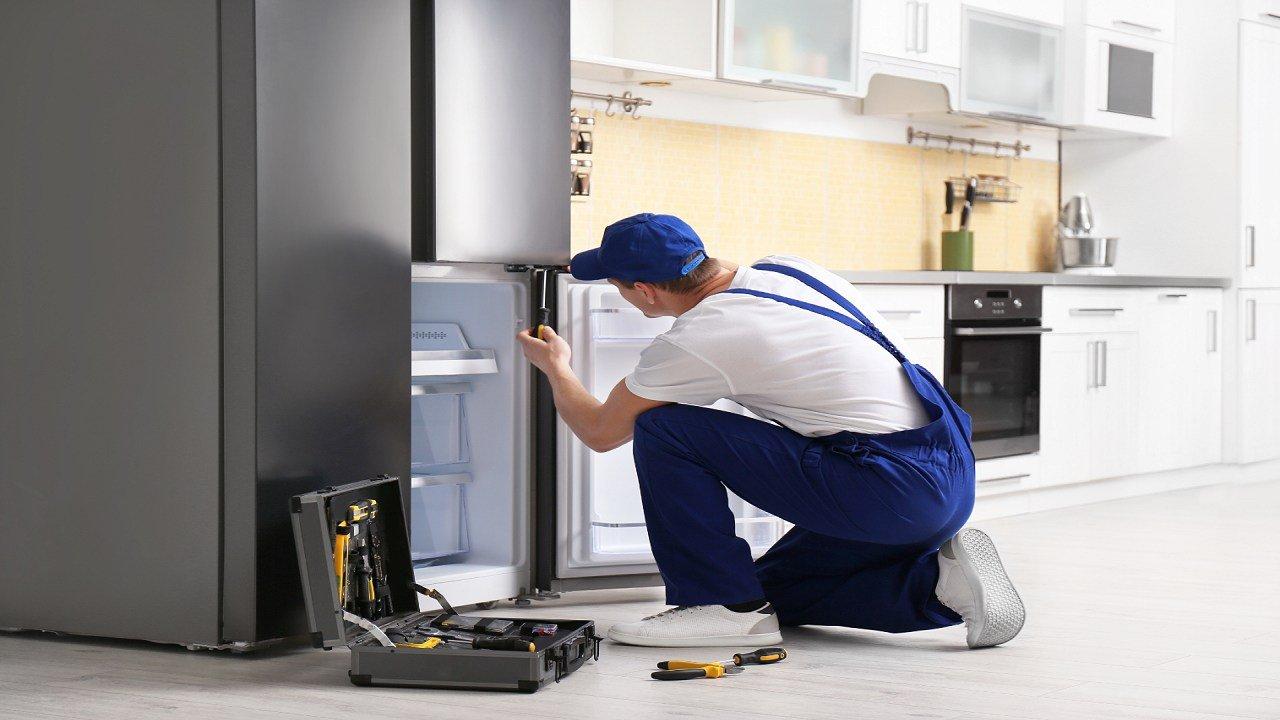Tipos de aparatos
- Aire acondicionado
- Automobile
- Chainsaw
- Circular Saw
- Lavaplatos
- Drills
- Secadora
- Drywall Screw Gun
- Horno
- Gas Fireplace
- Gas Grill
- Gas Patio Heater
- Grinder
- Heat Pump
- Impact Driver
- Impact Wrench
- Microonda
- Nailer
- Orbital Sander
- Calentadores de piscina
- Powerwall
- Distancia
- Refrigerador
- Television
- Lavadora
- Calentador de agua
Marcas de electrodomésticos
- A.O. Smith
- AccuCold
- Admiral Craft
- AGA
- Airrex
- Amana
- Ambiance
- American Range
- American Standard
- American Water Heaters
- Aquacal
- Armstrong
- Asko
- Avanti
- Avenlur
- Azure
- Beko
- Bellfires
- Bertazzoni
- Blackstone
- Blaze
- Blomberg
- BlueStar
- Bosch
- Bradford White
- Bromic
- Bryant
- Cafe
- Calcana
- Capital
- Carrier
- Char-Broil
- Char-Griller
- Chrysler
- Coates
- Coleman
- Comfortmaker
- Commercial Chef
- Continental
- Cosmo
- Cove
- Crown Verity
- Dacor
- Daikin
- Danby
- Danfoss
- DaVinci
- DCS
- Deco
- DeWALT
- Ducane
- Dyna-Glo
- Dyson
- EcoSmart
- Electrolux
- Element4
- Empava
- Equator
- Eurodib
- European Home
- Everdure
- Farberware
- Fhiaba
- FibroPool
- Fire Sense
- Fisher
- FiveStar
- Flare
- Flash Furniture
- Focus
- Ford
- Forno
- Forte
- Frigidaire
- Fulgor Milano
- Gaggenau
- GE
- General Motors
- GlowBrand
- Goodman
- Grundig
- GSW
- Haier
- Hayward
- Heatstar
- Heil
- Hestan
- Hisense
- Hitachi
- Hotpoint
- iio
- Ilve
- Impecca
- Ingignia
- Insignia
- JennAir
- John Wood
- Keeprite
- Kenmore
- Kenyon
- KitchenAid
- Kucht
- La Cornue
- Lennox
- LG
- Liebherr
- Lifetime
- Lion
- Luxaire
- Lynx
- Magic Chef
- Marvel
- Maytag
- McQuay
- MicroFridge
- Midea
- Miele
- Migali
- Monogram
- Montigo
- Mr Heater
- Napoleon
- Navien
- Nexgrill
- Noritz
- Panasonic
- Patio Comforts
- Payne
- Pentair
- Perlick
- PITT
- Premier
- Raypak
- Real Fyre
- Regency
- Reliance
- Rheem
- Rinnai
- Roma
- Ruud
- Saber
- Samsung
- Schwank
- Sharp
- Smeg
- Solas
- Sony
- Spartherm
- Speed Queen
- StaRite
- State Water Heaters
- Stiebel Eltron
- SubZero
- Summerset
- Summit
- SunGlo
- SunPak
- Sunpentown
- SunStar
- Superiore
- Takagi
- TCL
- TEC
- Tempstar
- Tesla
- Thermador
- Thor Kitchen
- Toshiba
- Town and Country
- Toyota
- Traeger
- Trane
- Twin Eagles
- U-Line
- Unique
- Vaillant Group
- Valor
- Verona
- Victory
- Viessmann
- Viking
- Vizio
- Weber
- Westinghouse
- Whirlpool
- Whynter
- York
- ZLINE
Categorías de artículos
- Aire Acondicionado
- Cuidado de los electrodomesticos
- Appliance News
- Dishwasher News
- Maquinas de secado
- Hornos
- Gas Fireplaces
- Microondas
- Calentadores de piscina
- Frigorificos
- Estufas - Cocinas
- Trucos y consejos
- Lavadoras
- Water Heaters
Más artículos
How do I troubleshoot a refrigerator that is not cooling?

If your refrigerator is not cooling properly, there are several troubleshooting steps you can take to identify and potentially resolve the issue. Here's a general guide to help you troubleshoot a refrigerator that is not cooling.
-
Check the Power and Settings.
Ensure that the refrigerator is properly plugged in and receiving power.Make sure the temperature control settings are set correctly. It's usually recommended to set the refrigerator temperature between 36-38°F (2-3°C) and the freezer temperature between 0-5°F (-18 to -15°C). -
Clean the Condenser Coils.
Over time, the condenser coils at the back or bottom of the refrigerator can accumulate dust and debris, which can hinder cooling efficiency. Clean the coils using a vacuum cleaner or a coil cleaning brush. -
Check the Door Seals.
Inspect the door seals (gaskets) for any signs of damage, wear, or gaps. Damaged seals can allow warm air to enter the refrigerator, affecting cooling performance. Replace the seals if necessary. -
Ensure Proper Air Circulation.
Ensure that there is adequate space around the refrigerator for proper air circulation. Avoid blocking the vents inside the refrigerator and freezer sections. -
Check the Evaporator Fan.
Open the freezer compartment and listen for the sound of the evaporator fan. If the fan is not running or is making unusual noises, it may need to be replaced. A malfunctioning fan can lead to inadequate cooling. -
Clear Ice Buildup.
If there is excessive ice buildup on the evaporator coils or in the freezer compartment, it can impede airflow and cooling. Defrost the refrigerator by turning it off and allowing the ice to melt. Clean up any water that accumulates during the defrosting process. -
Inspect the Compressor.
Listen for the sound of the compressor running. If it's not running or making unusual noises, there may be an issue with the compressor. A faulty compressor will require professional repair or replacement.
If these troubleshooting steps do not resolve the issue, it's recommended to contact a qualified appliance repair technician to diagnose and fix the problem. They have the expertise and tools to identify specific issues and make the necessary repairs to restore proper cooling functionality to your refrigerator.

If your refrigerator is not cooling properly, there are several troubleshooting steps you can take to identify and potentially resolve the issue. Here's a general guide to help you troubleshoot a refrigerator that is not cooling.
-
Check the Power and Settings.
Ensure that the refrigerator is properly plugged in and receiving power.Make sure the temperature control settings are set correctly. It's usually recommended to set the refrigerator temperature between 36-38°F (2-3°C) and the freezer temperature between 0-5°F (-18 to -15°C). -
Clean the Condenser Coils.
Over time, the condenser coils at the back or bottom of the refrigerator can accumulate dust and debris, which can hinder cooling efficiency. Clean the coils using a vacuum cleaner or a coil cleaning brush. -
Check the Door Seals.
Inspect the door seals (gaskets) for any signs of damage, wear, or gaps. Damaged seals can allow warm air to enter the refrigerator, affecting cooling performance. Replace the seals if necessary. -
Ensure Proper Air Circulation.
Ensure that there is adequate space around the refrigerator for proper air circulation. Avoid blocking the vents inside the refrigerator and freezer sections. -
Check the Evaporator Fan.
Open the freezer compartment and listen for the sound of the evaporator fan. If the fan is not running or is making unusual noises, it may need to be replaced. A malfunctioning fan can lead to inadequate cooling. -
Clear Ice Buildup.
If there is excessive ice buildup on the evaporator coils or in the freezer compartment, it can impede airflow and cooling. Defrost the refrigerator by turning it off and allowing the ice to melt. Clean up any water that accumulates during the defrosting process. -
Inspect the Compressor.
Listen for the sound of the compressor running. If it's not running or making unusual noises, there may be an issue with the compressor. A faulty compressor will require professional repair or replacement.
If these troubleshooting steps do not resolve the issue, it's recommended to contact a qualified appliance repair technician to diagnose and fix the problem. They have the expertise and tools to identify specific issues and make the necessary repairs to restore proper cooling functionality to your refrigerator.




